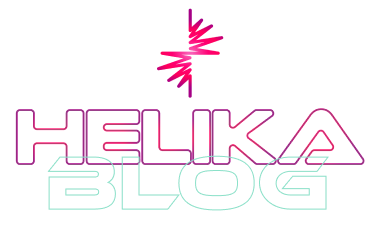It’s no secret that the initial reception of a new title often makes or breaks its success. The most recent example of this phenomenon in 2024 was Palworld, a survival game lovingly dubbed “Pokemon with guns.” The game saw five million installs within just three days of its Early Access release.
Enter the concept of the Golden Cohort: a term that encapsulates the fervor and commitment of a game’s first wave of players. These early adopters are not just your average players; they are pioneers looking for the next game to dedicate their time, effort, and money. Understanding and nurturing this group is crucial for developers who want to build a game that lasts for decades, not months.
What Is a Golden Cohort?
A Golden Cohort is a colloquial term used within the game industry to refer to a game’s initial user base—the users who are first to install a new game after launch.
If a game’s lifecycle was mapped out to the above technology adoption curve, the Golden Cohort would represent the Innovators.
The exact definition and measurement of a Golden Cohort are not well defined across video game marketing. Some game marketers believe a game’s Golden Cohort refers specifically to the users representing the first thousand installs, while others believe the Golden Cohort refers to the users who download a game within a week after its launch. Regardless, there is consensus that the term “Golden Cohort” generally refers to a new game’s initial users at, or shortly after, the game’s initial launch.
Why Are Golden Cohorts Significant In Gaming?
Golden Cohorts are critical for any game company to understand because this specific audience group offers unparalleled insight into a game’s potential for sustained engagement and growth. The Golden Cohort also offers an outsized opportunity for a newly launched game to gain long-term “superfans” who act as champions for their game.
You can make an amazing game, but you can’t make a success. Your players make the success.
— Imre Jele, Co-Founder of Bossa Studios and Head of Runescape.
As the earliest adopters of a new game, Golden Cohorts inherently represent the players most likely to dedicate their time and effort, offer feedback, and make in-game purchases. Put simply, the Golden Cohort for a new game is often the game’s most active, involved, and engaged players across key metrics such as cumulative revenue, average revenue per paying user (ARPPU), retention, and more.
Thus, Golden Cohorts also act as an important baseline for game developers to understand their users’ spending behaviors, gameplay actions, and more. In an industry defined by the phrase “follow the fun,” Golden Cohorts provide game studios with valuable direction on where to focus their attention and marketing spend after launch to drive player retention and maximize spending.
A game’s Golden Cohort are power users that often see much higher retention, spend, and in-game activity than users captured later in a game’s lifecycle.
One of the most important details for a new game to get right shortly after launch is the retention of its Golden Cohort. Competition is stiff in the gaming industry—no matter if it’s a mobile, blockchain, or triple-A game. Making one wrong step with your Golden Cohort—your most active, dedicated, and early player base—is widely regarded as a signal that a new game will be unsuccessful.
Shortly after Heroes [of Newerth] announced its set price, it lost half its players.
— Washington Post, source.
Analyzing Golden Cohorts for Blockchain Games
Most games have a similar ability to measure the behavior and spending of their Golden Cohort because the game industry at large has codified well-tested monetization models. From one-time purchases and direct in-app purchases to digital battle passes, the vast majority of games that exist today use similar, well-understood monetization models. This is also true of game touchpoints. Most games offer players a limited means of interaction—players must enter the game first to take actions that are always recorded by the game company itself.
Non-Web3 games can generally capture the player funnel directly from the systems they use. But what happens once on-chain actions come into play?
These time-tested models are completely upended by blockchain technology through the issuance of scarce, user-owned digital assets that provide in-game utility or social status. For example, NFT-based royalties represent a fundamental, net-new monetization model that is only just being explored.
Through NFT-based royalties, developers also stand to benefit from every future trade of their game’s assets. This model creates a mutually beneficial relationship between players and developers, paving the way for a more prosperous gaming industry.
— Immutable X, source.
Similarly, the ability to permissionlessly build markets around digital game assets means that a game’s Golden Cohort has multiple touchstones for tangentially interacting with the game directly on-chain—interactions that aren’t natively tracked by an average gaming company’s existing tech stack.
Web3-native data analytics platforms such as Helika provide new tools for games to gain insights into NFT royalties, a revenue stream that is unique to Web3.
Because of these unique considerations, finding and optimizing for a blockchain game’s Golden Cohort can be a challenging task. While the importance of Golden Cohorts remain the same for blockchain games, many web3 gaming projects struggle to effectively reconcile and track users across both their proprietary gaming servers and the blockchain technology their game assets live on.
This emerging problem has led to the rise of blockchain gaming data analytics platforms such as Helika Analytics, which offer data analytics solutions purpose-built to help blockchain games manage the mountains of data—both on- and off-chain— critical for making informed decisions that deepen the retention and spend of their Golden Cohort.
Helika’s comprehensive data analytics platform segments users into four different types: gamers, players, traders, and whales.
Conclusion
Blockchain gaming offers a new world of opportunity for gaming developers, but navigating this emerging space successfully has proven difficult. Compared to traditional game marketing and attribution, web3 gaming brings with it brand-new challenges that no game marketer—no matter how experienced—has dealt with before.
However, fundamental, battle-tested concepts such as the Golden Cohort are handy tools for web3 gaming companies, projects, and studios to begin mapping out this new industry and finding success. But to do so, they’ll need the most comprehensive data analytics tools that the industry can offer them.





